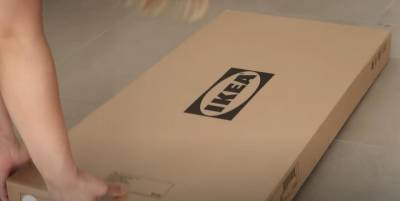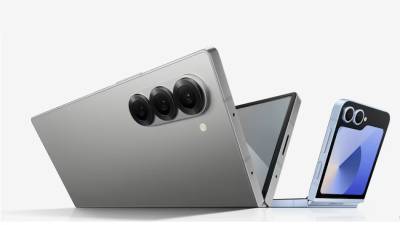Picture this: You’re scrolling TikTok on a phone that unfolds into a tablet, then rolls up like a burrito. Your friend texts from a device projecting 3D emojis into their palm. Meanwhile, someone across the café whispers to their phone’s AI—no screen needed. Welcome to 2028. Or maybe 2035. Honestly, who knows? The smartphone revolution got weird while we weren’t looking.
From Candy Bars to Bendy Screens: How Did We Get Here?
Remember when “smartphone innovation” meant slightly better cameras? We’ve come a long way from the BlackBerry’s clicky keyboard wars. The iPhone’s touchscreen was revolutionary, but let’s face it—modern slabs of glass all look the same. Enter foldables: part phone, part tablet, part origami project. Samsung’s Galaxy Z Fold 6 unfolds like a map, while Motorola’s Razr+ (2024) flips shut with a satisfying snap. But are these just fancy party tricks?
Here’s the kicker: People are buying them. Foldable shipments grew 64% last year, even with prices hitting $1,800. Why? Because screens that bend tap into something primal. We want tech that feels alive. A rigid glass rectangle? That’s so 2020.
The Foldable Fantasy vs. Reality
Unboxing a foldable feels like opening the future. That first unfold? Magic. But live with one for a month, and cracks appear—sometimes literally. The crease down the middle might soften, but it never fully disappears. Durability? Better than 2019’s disaster models, but drop it without a case and your wallet weeps. And apps? Developers still can’t agree on how to handle screens that change shape mid-use.
But—when it works? Editing a spreadsheet on the train, then unfolding into a tablet for Netflix? Chef’s kiss. Foldables aren’t for everyone, but they’ve carved a niche. As one Redditor put it: “It’s like having a Swiss Army knife that’s also my favorite toy.”
What’s Next? Phones That Roll Up, Project Holograms, or Mind-Read?
Foldables are just the opening act. Behind closed doors, companies are cooking up:
- Rollable displays: Xiaomi’s teased prototypes that expand from phone to tablet size with a flick
- AR glasses integration: Imagine Apple Vision Pro acting as your iPhone’s 100-inch screen
- Under-screen everything: Cameras, sensors—even fingerprint readers hidden beneath flawless glass
The wildest concept? Brain-computer interfaces. Neuralink’s working on it, but let’s be real—would you let Zuckerberg put a chip in your skull? Exactly.
“But I Just Want a Good Camera!” – The Normal Person’s Dilemma
All this innovation raises a question: When does “future” become “overkill”? Your aunt who just wants to Zoom with grandkids doesn’t need a holographic projector. Teenagers filming TikTok dances care more about battery life than rollable screens. The smartphone market is splitting. On one side: flashy tech for early adopters. On the other: reliable bricks for the rest of us.
Apple’s playing both sides. While they’ve resisted foldables (that crease would ruin their Instagram aesthetic), rumors swirl about an “iPhone Ultra” with modular attachments. Think: clip-on thermal cameras for hikers, or a snap-on glucose monitor for diabetics. Now we’re talking.
The Hidden Costs of Looking Cool
Let’s address the elephant in the room: A Galaxy Z Fold 6 costs as much as a used Honda. Repairs? Don’t get me started. Crack the outer screen and you’re out $400. Want insurance? That’s another $25/month. And environmentally, these tech marvels are nightmares. Rare earth metals in flexible displays, batteries glued into impossible-to-recycle designs… innovation isn’t always pretty.
But here’s hope: Fairphone’s making modular, repairable phones. Google’s using recycled aluminum. Maybe the future isn’t just flexible—it’s sustainable too.
Your Next Phone Might Not Even Look Like a Phone
Here’s where things get trippy. With AI handling more tasks, why do we need screens at all? Humane’s AI Pin (a Star Trek-esque lapel badge) projects lasers onto your palm. Rabbit R1 answers questions through a retro Walkman-like gadget. The “phone” is becoming an idea, not an object.
Will foldables dominate? Probably not. But they’ve broken the dam. Tomorrow’s devices might look like rings, bracelets, or nothing at all. Your move, Apple.
If you’re happy with your iPhone 15, breathe easy. Your phone’s not obsolete. But if you’ve ever thought, “I wish this thing could turn into a Kindle,” start saving. The future’s coming—one awkwardly folded screen at a time. Final thought: The best “phone” in 2030 might be something we can’t even imagine yet. Unless it’s just more TikTok. Some things never change.






__thumb__120x120__70__f17a05b0b66158ca4a66016ea3b3bbd1.jpg)





